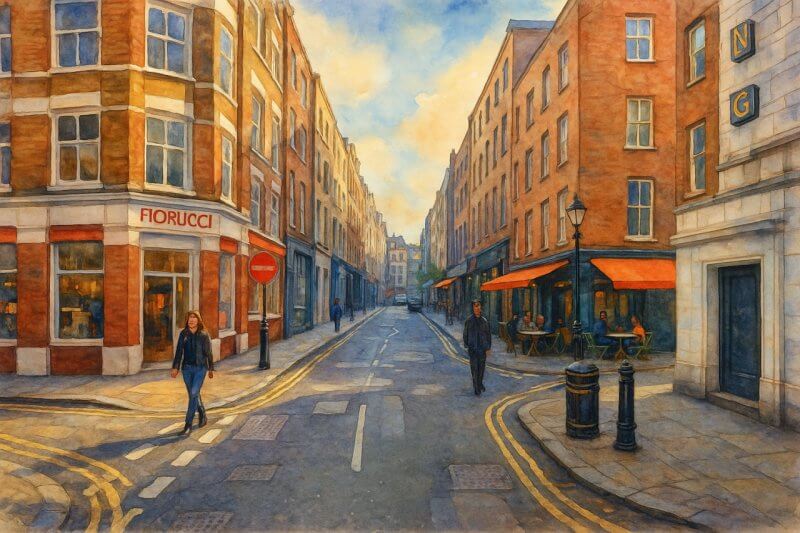
Soho, London
Introducing Soho
Soho is a lively and compact area located in the City of Westminster, right in the heart of London's West End. Though it falls entirely within Westminster, Soho borders the City of London to the east.Neighbouring areas include:
- Covent Garden to the east
- Fitzrovia to the north
- Mayfair to the west
- St James's and Leicester Square to the south
Size and Population
Soho covers roughly one square kilometre, making it one of London's smallest districts. Despite its compact size, it's densely packed with activity. The resident population is relatively small - estimated at around 3,000 to 3,500 people - but the number of daily visitors can reach tens of thousands due to its central location and vibrant attractions.Map of Soho, London
Streets in Soho
- Oxford Street
- Regent Street
- Shaftesbury Avenue
- Charing Cross Road
- Dean Street
- Wardour Street
- Greek Street
- Old Compton Street
History and Development
Soho began to develop in the late 17th century following the Great Fire of London, which led to the westward expansion of the city. The area was initially intended as an upscale residential quarter, but by the 18th century, it had begun to attract a more mixed population, including immigrants, artisans, and entertainers.In the 19th and 20th centuries, Soho became known for its bohemian atmosphere, theatres, clubs, and music venues. It also gained a reputation - both romanticised and notorious - for its red-light district, though this has declined in recent decades.
Origin of the Name "Soho"
The name "Soho" is believed to derive from an old hunting cry - "So-ho!" - used during hunts in the open fields that once covered the area. It was first recorded as a place name in the 1680s, shortly after the area was developed.Interestingly, this is the first place in the world known to bear the name Soho. The name has since been adopted by other urban districts, such as:
- SoHo (South of Houston Street) in New York City
- SoHo in Hong Kong
- Soho in Málaga, Spain
Character of the Area
Today, Soho is primarily a commercial and entertainment hub, with a blend of office spaces, restaurants, shops, bars, and media companies. It retains some residential pockets, often hidden above shops or down side streets.Soho has a diverse and dynamic character. It's home to LGBTQ+ venues, independent cinemas, global cuisine, and creative industries. Once working-class and gritty, it has undergone partial gentrification while still maintaining its eclectic charm.
Major Buildings and Sights
Soho offers many notable sights and landmarks:- Soho Square - A tranquil green space with historical significance
- Ronnie Scott's Jazz Club - One of the world's most famous jazz venues
- China Town - A vibrant cultural quarter at Soho's eastern edge
- Liberty London - Iconic Tudor-style department store just west of Soho
- Photographers' Gallery - A leading centre for contemporary photography
Nearest Underground Stations
Soho is extremely well connected by London Underground. The closest stations include:- Tottenham Court Road - Central, Elizabeth, and Northern lines
- Oxford Circus - Bakerloo, Central, and Victoria lines
- Piccadilly Circus - Bakerloo and Piccadilly lines
- Leicester Square - Northern and Piccadilly lines
Fun Fact
Soho played a key role in the history of public health. In 1854, physician Dr. John Snow famously traced a deadly cholera outbreak to a water pump on Broad Street (now Broadwick Street), laying the groundwork for modern epidemiology.
Painting of Soho (View full-size image here)